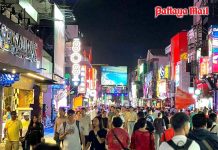BANGKOK, Jan 27 MCOT A total of 97.2 million international tourists visited the 10 ASEAN member states last year, posting a growth of three per cent from 2013.
The operationalisation of ASEAN Open Skies Agreements helped to maintain intra-ASEAN travel as the main source of tourism growth in the region, with record arrivals of 28.05 million, or a 53 per cent share of total international tourists visiting ASEAN, according to a joint statement after the Meeting of ASEAN Tourism Ministers on Jan 25 in Nay Pyi Taw, Myanmar.
The ministers commended the progress made in implementing the ASEAN Tourism Strategic Plan (ATSP) 2011-2015 and tasked senior officials to expedite the implementation of remaining measures to support the timely realisation of the ASEAN Economic Community (AEC).
They agreed that for the new ATSP 2016-2025, ASEAN should strive to become a quality tourism destination offering a unique and diverse ASEAN experience while committed to responsible, sustainable, inclusive and balanced tourism development.
They also endorsed the final text of the Agreement on the Establishment of the Regional Secretariat for the Implementation of the ASEAN Mutual Recognition Arrangement (MRA) on Tourism Professionals in Jakarta, Indonesia.
The agreement is expected to be signed during the 26th ASEAN Summit in April 2015 in Malaysia.
Malaysia’s initiative to develop an ASEAN-focused TV travel channel, ‘GOASEAN’, to promote ASEAN as a single tourism destination featuring key areas such as nature-based tourism, culture and heritage tourism, family fun and business tourism was also welcomed and supported.
To complement the travel channel, the ministers also supported the proposal to develop ASEAN Tourism Packages.
It was also agreed for ASEAN to enhance its competitiveness as a single tourist destination through the development and adoption of tourism standards.
The ministers were pleased with the adoption of ASEAN tourism standards and their certification process for green hotel, homestay, spa services, public toilet, clean tourist city and community-based tourism standards, and tasked senior officials to ensure the relevant establishments adhere to adopted standards.
They launched the ASEAN Tourism Security & Safety Guidelines and Online Resource Centre website (www.aseantssrc.org), which contains guidelines, best practices and background papers on tourism-related security and safety practices in ASEAN member states. (BERNAMA)




